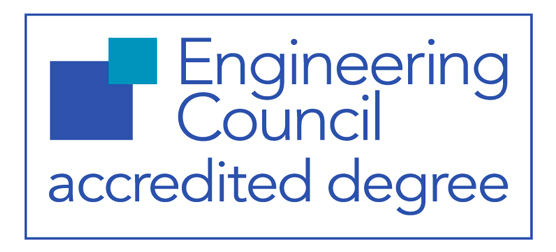Explore the First-class facilities at Swansea University,
a UK top 10 academic centre for advanced materials and manufacturing research.
{"id":1,"title":"Analytical & Electrochemistry 1","default":true,"thumb":"","img":{"src":"https:\/\/materials-academy.co.uk\/wp-content\/uploads\/2020\/12\/IMG_20201120_132353_00_009-scaled.jpg","width":2560},"position":{"yaw":0.079755635848979267166214413009583950042724609375,"pitch":0.120166231984370597274391911923885345458984375,"fov":1.4274487578895309614068764858529902994632720947265625},"hotspots":[{"id":1,"type":"text","title":"FTIR","position":{"yaw":-2.94281342742805662737737293355166912078857421875,"pitch":-0.018676971025822552974204882048070430755615234375},"popup":{"titleColor":"#dd3333","titleBgColor":"#ffffff"},"icon":{"url":"https:\/\/materials-academy.co.uk\/wp-content\/uploads\/2021\/04\/Info_Spot.png","width":"30","height":"30"}},{"id":2,"type":"scene","title":"","position":{"yaw":0.041289959365645501065955613739788532257080078125,"pitch":0.00793613624403377571070450358092784881591796875},"scene":{"id":"2","position":""},"popup":{"titleColor":"#000000","titleBgColor":"#ffffff"},"icon":{"url":"https:\/\/materials-academy.co.uk\/wp-content\/uploads\/2021\/04\/PrevScene_Arrow.png","width":"30","height":"30"}}]}
{"id":2,"title":"Analytical & Electrochemistry 2","default":false,"thumb":"","img":{"src":"https:\/\/materials-academy.co.uk\/wp-content\/uploads\/2020\/12\/IMG_20201120_132440_00_010-scaled.jpg","width":2560},"position":{"yaw":-0.020652962368512106650086934678256511688232421875,"pitch":0.06644628217532755343199823983013629913330078125,"fov":1.4274487578895309614068764858529902994632720947265625},"hotspots":[{"id":1,"type":"scene","title":"","position":{"yaw":-1.921765732598647247186818276531994342803955078125,"pitch":0.139267918870540796660861815325915813446044921875},"scene":{"id":"1","position":""},"popup":{"titleColor":"#000000","titleBgColor":"#ffffff"},"icon":{"url":"https:\/\/materials-academy.co.uk\/wp-content\/uploads\/2021\/04\/NextScene_Arrow.png","width":"30","height":"30"}},{"id":2,"type":"scene","title":"","position":{"yaw":3.0684999922418345619234969490207731723785400390625,"pitch":0.250069062585257739783628494478762149810791015625},"scene":{"id":"4","position":""},"popup":{"titleColor":"#000000","titleBgColor":"#ffffff"},"icon":{"url":"https:\/\/materials-academy.co.uk\/wp-content\/uploads\/2021\/04\/PrevScene_Arrow.png","width":"30","height":"30"}},{"id":3,"type":"scene","title":"","position":{"yaw":1.45946034064399565721714679966680705547332763671875,"pitch":0.0391340888281632715006708167493343353271484375},"scene":{"id":"3","position":""},"popup":{"titleColor":"#000000","titleBgColor":"#ffffff"},"icon":{"url":"https:\/\/materials-academy.co.uk\/wp-content\/uploads\/2021\/04\/PrevScene_Arrow.png","width":"30","height":"30"}},{"id":4,"type":"text","title":"Speed Mixer","position":{"yaw":0.5761368478548405391848064027726650238037109375,"pitch":0.0165562653433983797413020511157810688018798828125},"popup":{"titleColor":"#dd3333","titleBgColor":"#ffffff"},"icon":{"url":"https:\/\/materials-academy.co.uk\/wp-content\/uploads\/2021\/04\/Info_Spot.png","width":"30","height":"30"}}]}
{"id":3,"title":"Analytical & Electrochemistry 4","default":false,"thumb":"","img":{"src":"https:\/\/materials-academy.co.uk\/wp-content\/uploads\/2020\/12\/IMG_20201120_132848_00_013-scaled.jpg","width":2560},"position":{"yaw":2.8993021953297812842720304615795612335205078125,"pitch":0.1637418054985548820923213497735559940338134765625,"fov":1.4274487578895309614068764858529902994632720947265625},"hotspots":[{"id":1,"type":"text","title":"Profilometer","position":{"yaw":-0.2417419121760957523292745463550090789794921875,"pitch":-0.1027422658406038635803270153701305389404296875},"popup":{"titleColor":"#dd3333","titleBgColor":"#ffffff"},"icon":{"url":"https:\/\/materials-academy.co.uk\/wp-content\/uploads\/2021\/04\/Info_Spot.png","width":"30","height":"30"},"text":"<p>The profilometer uses a stylus to accurately profile surface topography. Key surface characteristics measured with this device include surface roughness and coating thickness.<br \/><br \/><b>Contact<\/b><br \/>Dr David Beynon -\u00a0<a href=\"mailto:d.g.beynon@swansea.ac.uk\">d.g.beynon@swansea.ac.uk<\/a><\/p>"},{"id":2,"type":"scene","title":"","position":{"yaw":2.446706689691662717223152867518365383148193359375,"pitch":0.0383498573338325599024756229482591152191162109375},"scene":{"id":"5","position":""},"popup":{"titleColor":"#000000","titleBgColor":"#ffffff"},"icon":{"url":"https:\/\/materials-academy.co.uk\/wp-content\/uploads\/2021\/04\/PrevScene_Arrow.png","width":"30","height":"30"}},{"id":3,"type":"scene","title":"","position":{"yaw":-2.31404861440707776409908547066152095794677734375,"pitch":0.274068843247480486979839042760431766510009765625},"scene":{"id":"2","position":""},"popup":{"titleColor":"#000000","titleBgColor":"#ffffff"},"icon":{"url":"https:\/\/materials-academy.co.uk\/wp-content\/uploads\/2021\/04\/NextScene_Arrow.png","width":"30","height":"30"}}]}
{"id":4,"title":"Analytical & Electrochemistry 3","default":false,"thumb":"","img":{"src":"https:\/\/materials-academy.co.uk\/wp-content\/uploads\/2020\/12\/IMG_20201120_132510_00_011-scaled.jpg","width":2560},"position":{"yaw":1.5146805485181733530453129787929356098175048828125,"pitch":0.1964818317003906855688910582102835178375244140625,"fov":1.4274487578895309614068764858529902994632720947265625},"hotspots":[{"id":1,"type":"text","title":"Gamry Galvano\/Potentiostat","position":{"yaw":-0.773673317809954852464215946383774280548095703125,"pitch":0.043095415926483582325090537779033184051513671875},"popup":{"titleColor":"#dd3333","titleBgColor":"#ffffff"},"icon":{"url":"https:\/\/materials-academy.co.uk\/wp-content\/uploads\/2021\/04\/Info_Spot.png","width":"30","height":"30"},"text":"<p>The Interface 1010E can perform a host of electrochemical techniques, including cyclic voltammetry, chronoamperometry, chronopotentiometry, polarization resistance, potentiodynamic, cyclic polarization and galvanic corrosion - all within the current and potential ranges of +\/- 1 A and +\/- 11 V respectively.<br \/><br \/><b>Contact<\/b><br \/>Dr Calvin Richards -\u00a0<a href=\"mailto:c.a.j.richards@swansea.ac.uk\">c.a.j.richards@swansea.ac.uk<\/a><\/p>"},{"id":2,"type":"text","title":"Solartron Potentiostat - EIS Capability","position":{"yaw":0.8126168618806897114836829132400453090667724609375,"pitch":0.044522914910654520781463361345231533050537109375},"popup":{"titleColor":"#dd3333","titleBgColor":"#ffffff"},"icon":{"url":"https:\/\/materials-academy.co.uk\/wp-content\/uploads\/2021\/04\/Info_Spot.png","width":"30","height":"30"},"text":"<div class=\"iframe-wrapper show-modal\">\n<div id=\"custom-ifram\">\n<p>The SI 1287 electrochemical interface and 1255 HF frequency response analyzer offer high accuracy, wide bandwidth capabilities for a host of DC and AC operations. Outside of the typical pontetiostat and galvanostat experiments, this setup can be utilised to run electrochemical impedance spectroscopic experiments, which are ideal when working with coated metal systems. This setup is capable of supplying +\/-14.5 V for polarization -experiments, +\/-2 A max current output, and up to 1 MHz frequencies for EIS related measurements.<br \/><br \/><b>Contact<\/b><br \/>Dr Calvin Richards -\u00a0<a href=\"mailto:c.a.j.richards@swansea.ac.uk\">c.a.j.richards@swansea.ac.uk <\/a><\/p>\n<\/div>\n<\/div>"},{"id":3,"type":"text","title":"Rotating Disk Electrode (RDE)","position":{"yaw":1.66297565918670642304277862422168254852294921875,"pitch":-0.1164791029439999903161151451058685779571533203125},"popup":{"titleColor":"#dd3333","titleBgColor":"#ffffff"},"icon":{"url":"https:\/\/materials-academy.co.uk\/wp-content\/uploads\/2021\/04\/Info_Spot.png","width":"30","height":"30"},"text":"<div class=\"iframe-wrapper show-modal\">\n<div id=\"custom-ifram\">\n<p>RDE utilises a hydrodynamic working electrode to study the mechanisms of redox reactions, namely oxygen reduction, occurring at the sample electrode surface in immersed conditions. Control of the sample disk electrode rotation speed enables the study of the electron transfer processes at the sample surface and the assessment of the diffusion-convection controlled reaction kinetics approaching the rotating sample surface. The influence of inhibitors and\/or variation in electrolyte can also be measured for a given sample electrode. This bespoke apparatus allows for individual sample electrodes to be used and replaced as needed. RDE measurements are recorded in conjunction with a potentio\/galvanostat.<br \/><br \/><b>Contact<\/b><br \/>Dr Calvin Richards -\u00a0<a href=\"mailto:c.a.j.richards@swansea.ac.uk\">c.a.j.richards@swansea.ac.uk<\/a><\/p>\n<\/div>\n<\/div>"},{"id":4,"type":"scene","title":"","position":{"yaw":-1.66340088841685229681388591416180133819580078125,"pitch":0.017510610681743088434814126230776309967041015625},"scene":{"id":"2","position":""},"popup":{"titleColor":"#000000","titleBgColor":"#ffffff"},"icon":{"url":"https:\/\/materials-academy.co.uk\/wp-content\/uploads\/2021\/04\/NextScene_Arrow.png","width":"30","height":"30"}}]}
{"id":5,"title":"Analytical & Electrochemistry 5","default":false,"thumb":"","img":{"src":"https:\/\/materials-academy.co.uk\/wp-content\/uploads\/2020\/12\/IMG_20201120_132553_00_012-scaled.jpg","width":2560},"position":{"yaw":0.0756336682514842095770291052758693695068359375,"pitch":-0.055144967444871184625299065373837947845458984375,"fov":1.4274487578895309614068764858529902994632720947265625},"hotspots":[{"id":1,"type":"text","title":"UV-Vis-NIR","position":{"yaw":-0.0617175757293484394949700799770653247833251953125,"pitch":0.01616176644392197658817167393863201141357421875},"popup":{"titleColor":"#dd3333","titleBgColor":"#ffffff"},"icon":{"url":"https:\/\/materials-academy.co.uk\/wp-content\/uploads\/2021\/04\/Info_Spot.png","width":"30","height":"30"}},{"id":2,"type":"text","title":"FTIR","position":{"yaw":-1.885198008096292454638387425802648067474365234375,"pitch":-0.032016464870618932536672218702733516693115234375},"popup":{"titleColor":"#dd3333","titleBgColor":"#ffffff"},"icon":{"url":"https:\/\/materials-academy.co.uk\/wp-content\/uploads\/2021\/04\/Info_Spot.png","width":"30","height":"30"},"text":"<p>Allows the combination of thermal analysis with characterisation of evolved gases from sample material. In this configuration, evolved gases pass through the connected transfer line to FTIR analyser, which uses infrared spectroscopy to allocate functional groups of emitted gaseous products. Further, more Indepth identification of volatile\/semi-volatile organic species can be subsampled via another transfer line to the GC-MS. This uses chromatography to separate gaseous mixtures into discrete bands where they are ionised and identified by mass spectrometry. Typical example maybe looking at volatile release from curing of polymer precursor materials.<br \/><br \/><b>Contact<\/b><br \/>Dr Geraint Sullivan -\u00a0<a href=\"mailto:%20%20%20g.l.sullivan@swansea.ac.uk\">g.l.sullivan@swansea.ac.uk<\/a><\/p>"},{"id":3,"type":"text","title":"STA","position":{"yaw":-2.1570478406393096548754328978247940540313720703125,"pitch":0.0375713092050915520303533412516117095947265625},"popup":{"titleColor":"#dd3333","titleBgColor":"#ffffff"},"icon":{"url":"https:\/\/materials-academy.co.uk\/wp-content\/uploads\/2021\/04\/Info_Spot.png","width":"30","height":"30"},"text":"<p>Allows the combination of thermal analysis with characterisation of evolved gases from sample material. In this configuration, evolved gases pass through the connected transfer line to FTIR analyser, which uses infared spectroscopy to allocate functional groups of emitted gaseous products. Further, more Indepth identification of volatile\/semi-volatile organic species can be subsampled via another transfer line to the GC-MS. This uses chromatography to separate gaseous mixtures into discrete bands where they are ionised and identified by mass spectrometry. Typical example maybe looking at volatile release from curing of polymer precursor materials.<br \/><br \/><b>Contact<\/b><br \/>Dr Geraint Sullivan -\u00a0<a href=\"mailto:%20%20%20g.l.sullivan@swansea.ac.uk\">g.l.sullivan@swansea.ac.uk<\/a><\/p>"},{"id":4,"type":"text","title":"GCMS","position":{"yaw":-2.570087325180633541776842321269214153289794921875,"pitch":-0.1842086671858425006575998850166797637939453125},"popup":{"titleColor":"#dd3333","titleBgColor":"#ffffff"},"icon":{"url":"https:\/\/materials-academy.co.uk\/wp-content\/uploads\/2021\/04\/Info_Spot.png","width":"30","height":"30"},"text":"<p>Allows the combination of thermal analysis with characterisation of evolved gases from sample material. In this configuration, evolved gases pass through the connected transfer line to FTIR analyser, which uses infared spectroscopy to allocate functional groups of emitted gaseous products. Further, more Indepth identification of volatile\/semi-volatile organic species can be subsampled via another transfer line to the GC-MS. This uses chromatography to separate gaseous mixtures into discrete bands where they are ionised and identified by mass spectrometry. Typical example maybe looking at volatile release from curing of polymer precursor materials.<br \/><br \/><b>Contact<\/b><br \/>Dr Geraint Sullivan -\u00a0<a href=\"mailto:%20%20%20g.l.sullivan@swansea.ac.uk\">g.l.sullivan@swansea.ac.uk<\/a><\/p>"},{"id":5,"type":"scene","title":"","position":{"yaw":-3.11428461535735578991079819388687610626220703125,"pitch":0.3620972746911821360527028446085751056671142578125},"scene":{"id":"3","position":""},"popup":{"titleColor":"#000000","titleBgColor":"#ffffff"},"icon":{"url":"https:\/\/materials-academy.co.uk\/wp-content\/uploads\/2021\/04\/NextScene_Arrow.png","width":"30","height":"30"}}]}
{"primaryColor":"#ffffff","secondaryColor":"#dd3333","autostart":0,"move":0,"zoom":0,"menu":0,"hideMenu":1,"hdesktop":"1-2","htablet":"1-2","hmobile":"1-1","zoomScroll":0,"fullImages":0,"gyro":0}
Menu





